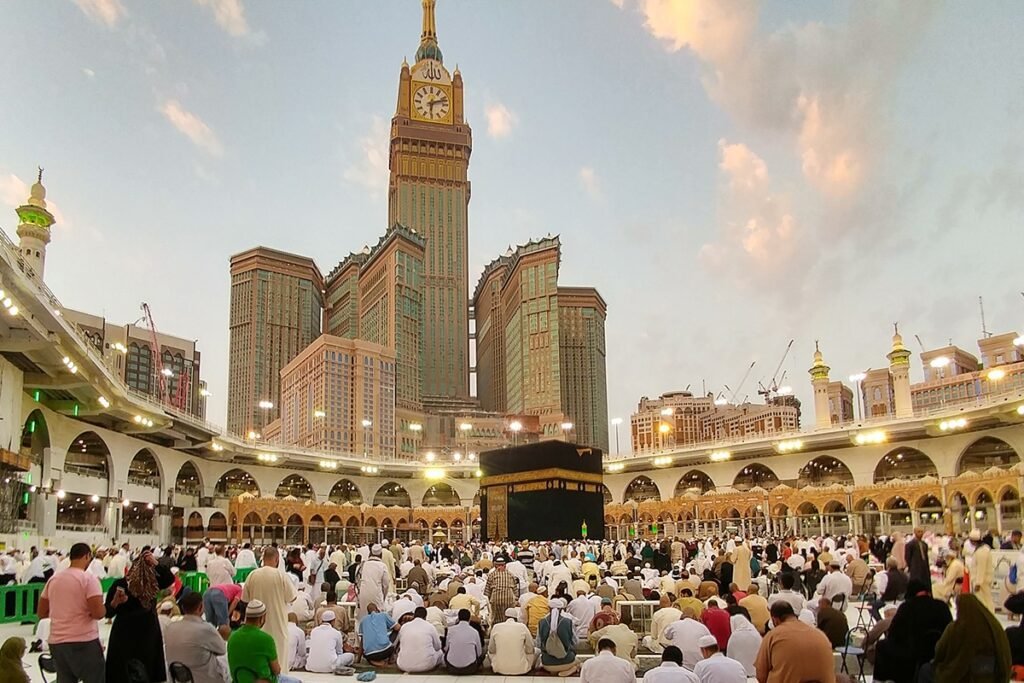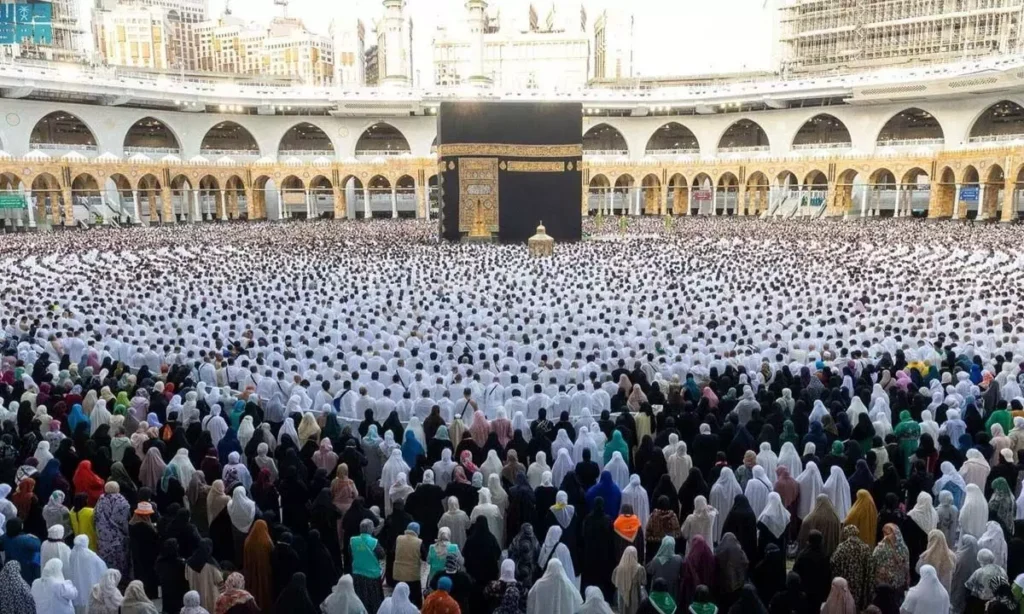More than 1.67 million people are taking part in Hajj 2025 in Saudi Arabia, according to new data from the General Authority for Statistics (GASTAT). These numbers show the continued importance of this sacred Islamic journey and how it connects millions of Muslims from around the world.
This year’s Hajj is among the largest since the COVID-19 pandemic, reflecting not only the religious devotion of Muslims worldwide but also the Saudi government’s efforts to welcome pilgrims safely and smoothly.
What Is Hajj and Why Is It Important?
Hajj is one of the Five Pillars of Islam. Every able-bodied Muslim who can afford it is required to perform this pilgrimage at least once in their lifetime. It takes place annually in the Islamic month of Dhul Hijjah, in and around the holy city of Makkah.

Pilgrims complete a series of religious duties over several days, including the Tawaf (circling the Kaaba), standing at Arafat, and symbolically stoning the devil at Mina. Hajj is a time of reflection, unity, and spiritual renewal.
A Breakdown of the Hajj 2025 Pilgrim Statistics
GASTAT released official numbers showing that:

- 1,667,000+ pilgrims are performing Hajj in 2025
- Over 1.5 million pilgrims came from abroad
- More than 220,000 are domestic pilgrims from within Saudi Arabia
This year’s figure highlights the strong return of international visitors to Hajj, many of whom had been restricted during the pandemic years. The rise in numbers also shows improved visa processing and transport facilities for global pilgrims.
Pilgrims From Across the Globe
Pilgrims for Hajj 2025 have come from over 180 countries. This shows how international and diverse the Islamic community truly is. The largest groups of pilgrims are from:
- Indonesia
- India
- Pakistan
- Bangladesh
- Egypt
- Nigeria
- Turkey
Many pilgrims spend months preparing physically, emotionally, and spiritually for the journey. Some save money for years or even decades. Their arrival in Saudi Arabia reflects personal sacrifices and deep faith.
How Saudi Arabia Supports Pilgrims

Hosting over 1.6 million pilgrims is no small task. Saudi Arabia has made significant investments to improve infrastructure, transport, security, and healthcare around the Hajj sites.
In 2025, the government:
- Added thousands of new buses and trains to serve key routes
- Expanded smart services such as e-guides, real-time apps, and digital Hajj permits
- Improved health centers and made heat-safety plans for extreme weather
- Deployed hundreds of thousands of workers and volunteers to assist pilgrims
Officials worked closely with international Hajj missions to coordinate arrival schedules, accommodations, and crowd management.
The Economic and Social Impact of Hajj 2025
Hajj brings not just spiritual rewards but also huge economic value to Saudi Arabia. It is part of the Kingdom’s plan to boost religious tourism under its Vision 2030 initiative.
Key benefits of Hajj include:
- Billions of dollars in tourism revenue from flights, hotels, food, and services
- Job creation in sectors like hospitality, security, healthcare, and transport
- Cultural exchange between Muslims from different parts of the world
The successful organization of Hajj helps strengthen Saudi Arabia’s global standing as the custodian of the two holy mosques.
Challenges Faced During Hajj
Even with careful planning, organizing a pilgrimage on this scale is complex. Some common challenges include:
- Extreme summer heat, which can lead to dehydration and heatstroke
- Crowd control, especially at high-traffic rituals like the stoning at Mina
- Health risks, including COVID-19, flu, and respiratory illnesses
- Accommodation shortages, especially for late-booking pilgrims
To handle these issues, the Saudi Ministry of Hajj and Umrah launched special safety campaigns this year, including distributing free water, providing shaded rest zones, and offering health checkups.
Digital Technology Makes Hajj Easier
One major difference in Hajj 2025 is the widespread use of digital tools. Pilgrims now use mobile apps for:
- Navigation and directions to key ritual sites
- Translation and religious guidance in multiple languages
- Emergency services and health assistance
- Live updates on crowd levels and safety alerts
The “Nusuk” platform, launched by the Saudi government, helps pilgrims manage everything from visa applications to accommodation bookings and health records.
A Journey of Faith and Unity

Despite the heat and long days, pilgrims describe Hajj as one of the most emotional and powerful moments of their lives. It is not only a spiritual cleansing but also a time for reflection, prayer, and togetherness.
Many first-time pilgrims say they are amazed by:
- The scale of devotion and unity of millions of people
- The sense of peace and patience even in large crowds
- The chance to meet Muslims from different backgrounds and cultures
For many, this journey brings tears of joy and a deep feeling of closeness to God.
Looking Ahead to Hajj 2026
With the success of Hajj 2025, Saudi Arabia is already looking ahead. Plans are underway to:
- Expand Mina and Arafat campsites for more capacity
- Upgrade pilgrim transport systems with more electric and automated buses
- Improve multi-language support for non-Arabic speaking pilgrims
- Strengthen partnerships with Hajj agencies globally
Saudi officials want to ensure future pilgrimages are safe, smooth, and spiritually fulfilling for everyone involved.
Conclusion: Hajj 2025 Shows Faith in Motion
The Hajj 2025 pilgrim statistics show a strong and united Islamic community coming together for one of the world’s biggest faith gatherings. With over 1.67 million people performing Hajj, this year marks a turning point in post-pandemic religious tourism.
Saudi Arabia’s commitment to making Hajj a safe and meaningful experience has been widely appreciated. As more Muslims return to this holy ritual, the world sees not only a display of religious faith but also human unity, compassion, and cooperation.
Read More: Big Plans for Flying Taxis in Oman Revealed by LYNEports, AeroVecto














